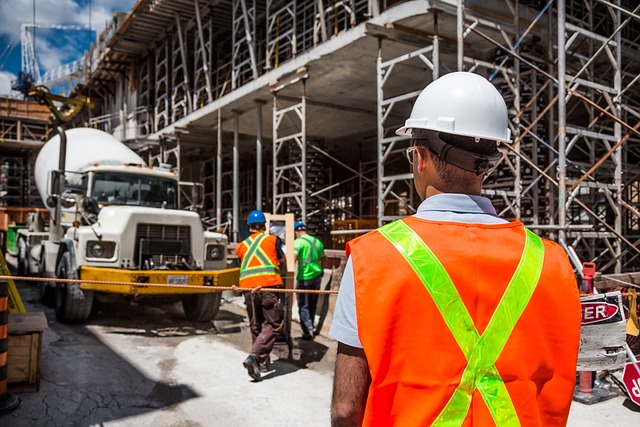Who Is Responsible for a Construction Accident?
Construction sites are inherently risky environments, and accidents can happen despite safety protocols. When a construction accident occurs, a critical question arises: who is responsible? In this article, we delve into the complex landscape of construction accident liability, exploring the key factors that determine responsibility and the parties involved.
Understanding Construction Accident Liability
Determining responsibility for a construction accident involves navigating a multifaceted web of legal considerations. Various parties may be held accountable, and the degree of responsibility can vary based on factors such as negligence, contractual obligations, and the nature of the accident. When addressing the critical question of who is responsible for a construction accident, it becomes essential to meticulously examine the circumstances, contracts, and applicable laws to accurately identify the parties involved and their respective liabilities to pursue fair and just legal recourse.
The Role of Employers
Employers bear a significant responsibility for the safety of their employees on construction sites. They are obligated to provide a safe working environment, adequate training, and proper safety equipment. Failure to fulfill these obligations can result in employer liability for construction accidents.
Employers are expected to adhere to Occupational Safety and Health Administration (OSHA) regulations and industry safety standards. Violations of these regulations can strengthen a case against an employer in the event of an accident.
Contractor and Subcontractor Responsibilities
Construction projects often involve multiple contractors and subcontractors, each with distinct responsibilities. The primary contractor, also known as the general contractor, is typically responsible for overall site safety. However, subcontractors also have a duty to maintain safety within their specific areas of operation.
Determining responsibility within the chain of contractors depends on the contractual agreements and the allocation of responsibilities outlined in these contracts. If a subcontractor’s negligence contributes to an accident, they may be held accountable for their specific role in the incident.
Property Owners
In some cases, property owners may share responsibility for construction accidents that occur on their premises. Property owners are expected to ensure that the site is reasonably safe for construction activities. This includes addressing potential hazards and maintaining the property in a condition that minimizes risks.
Property owners may be held liable if they were aware of dangerous conditions on the property, failed to address them, and these conditions contributed to the accident. Liability, in this case, is often linked to the property owner’s duty to exercise reasonable care.
Manufacturers and Suppliers
Construction accidents can result from defective equipment or materials. In such cases, manufacturers and suppliers of the faulty products may be held responsible for the resulting injuries. Product liability claims may be pursued if the equipment or materials were inherently dangerous due to design flaws, manufacturing defects, or inadequate warnings.
The injured party must demonstrate that the defective product was a substantial factor in causing the accident. Manufacturers and suppliers can be held strictly liable for defects, even if they exercised reasonable care in the production process.
Architects and Engineers
Construction accidents can also be linked to design-related issues. Architects and engineers involved in the project may face liability if their designs contribute to unsafe conditions. This could include structural flaws, insufficient load-bearing capacities, or inadequate safety measures in the original plans.
Liability for design-related issues may depend on whether the architect or engineer exercised a reasonable standard of care in developing the plans. If their designs deviate from accepted industry standards and contribute to an accident, they may be held accountable.
Third-Party Liability
Beyond the immediate construction team, third parties may also play a role in construction accidents. This could involve visitors to the construction site, pedestrians in the vicinity, or even adjacent property owners. If a third party’s actions or negligence contribute to the accident, they may share liability for the resulting injuries.
Determining third-party liability requires a careful examination of the circumstances surrounding the accident and whether the third party had a duty of care that they failed to uphold.
Contributory Negligence
In some cases, construction accidents may result from the combined negligence of multiple parties. Contributory negligence acknowledges that more than one party may share responsibility for an accident. The legal system then determines the degree of fault assigned to each party involved.
Contributory negligence can complicate liability issues, as it involves a nuanced assessment of the actions and responsibilities of all parties leading up to the accident.
Conclusion
Construction accidents involve a complex interplay of responsibilities among various parties. Determining who is responsible requires a thorough examination of the circumstances, contractual agreements, and adherence to safety standards. Employers, contractors, property owners, manufacturers, architects, engineers, and even third parties may be held liable, depending on the specifics of each case.
In the aftermath of a construction accident, seeking legal counsel is crucial to navigate this intricate legal landscape. An experienced attorney can assess the details of the accident, identify responsible parties, and pursue appropriate legal actions to secure compensation for the injured party. As construction sites continue to evolve, the importance of accountability and adherence to safety standards remains paramount in preventing and addressing construction accidents.

